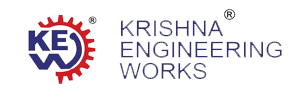Rotogravure is best for high-quality, long-run flexible packaging with exceptional consistency. Flexo printing is more cost-effective, versatile, and eco-friendly, making it ideal for short-to-medium runs and varied materials. Both technologies dominate global packaging, but the choice depends on print quality, job volume, material type, and operating cost.
Rotogravure and Flexographic (Flexo) printing are two major printing technologies used across packaging, converting, labels, and flexible film industries.
Both methods deliver high-speed production and consistent output, but each has unique technical strengths, ideal substrates, cost factors, and performance characteristics.
1. Printing Process Overview
Rotogravure Printing
- Uses engraved copper cylinders with recessed cells.
- Ink fills the microscopic cells and transfers directly onto the substrate via pressure.
- Designed for long-run, ultra-high-quality, consistent printing.
- Highly automated and stable at high speeds.
Flexo Printing
- Uses flexible photopolymer plates with raised image areas.
- Ink is transferred via anilox roller and plate to the substrate.
- More flexible and cost-efficient for short to medium runs.
- Quick job changeovers and wide material compatibility.
2. Print Quality & Precision
Rotogravure
- Superior, photographic-quality printing.
- Crisp images, fine gradients, perfect repeatability.
- Excellent for complex graphics and premium packaging.
- Achieves very high ink density and sharp halftones.
Flexo
- Very high quality with modern HD plates.
- Slightly less fine detail compared to gravure.
- Great for labels, packaging, corrugated, and films.
- Better for simple to medium-complexity graphics.
3. Speed & Production Efficiency
Rotogravure
- Extremely high production speeds (up to 600–800 m/min).
- Suited for large production volumes with minimal variance.
- Cylinder wear is negligible → very repeatable across millions of meters.
Flexo
- Fast production but typically lower than gravure.
- Ideal for jobs requiring fast setup and switching.
- Efficient for shorter or frequent design changes.
4. Substrate Compatibility
Rotogravure
Best for:
- BOPP / PET / CPP films
- PVC, aluminium foil
- Specialty laminates
- High-end flexible packaging
Rotogravure works best when substrate surface tension is stable and requires premium print consistency.
Flexo
Best for:
- Paper and boards
- Kraft paper
- Labels, films, shrink sleeves
- Corrugated boxes
- Nonwovens & foils
Flexo supports more varied materials than gravure.
5. Tooling, Setup & Cost Factors
Rotogravure
- Cylinder engraving is expensive but durable.
- High initial setup cost.
- Best ROI for long-run, high-volume production.
- Excellent for FMCG packaging where consistency is critical.
Flexo
- Photopolymer plates are cheaper and easier to create.
- Much lower initial investment.
- Makes more sense for short to medium runs.
- More economical for frequent artwork changes.
6. Ink Systems & Environmental Factors
Rotogravure
- Primarily solvent-based inks.
- Requires solvent recovery systems.
- Lights & metallic inks perform exceptionally well.
- Very stable drying and color consistency.
Flexo
- Supports water-based, solvent-based, and UV inks.
- More eco-friendly ink options.
- Faster changeovers and easier ink handling.
7. Applications Comparison
Rotogravure Applications
- High-volume flexible packaging
- Food and snack packaging
- Pharma packaging
- Laminated structures
- Premium printed films
- High-coverage, deep ink applications
Flexo Applications
- Labels & stickers
- Corrugated packaging
- Paper bags, tissue, wipes
- Shrink sleeves
- Industrial packaging
- Mid-volume flexible packaging
8. When to Choose Rotogravure?
Choose Gravure when you need:
✔ Ultra-high print quality
✔ Long-run efficiency
✔ Consistent colors across millions of meters
✔ Deep ink coverage
✔ Premium packaging results
9. When to Choose Flexo?
Choose Flexo when you need:
✔ Lower setup and tooling cost
✔ Fast changeovers
✔ Short/medium job runs
✔ Eco-friendly ink compatibility
✔ Versatility across substrates
10. Comparison Table
| Feature | Rotogravure | Flexo Printing |
|---|---|---|
| Print Quality | Outstanding, photographic | High, improving with HD plates |
| Tooling Cost | High (engraved cylinders) | Low (photopolymer plates) |
| Best For | Long, continuous runs | Short/medium runs |
| Inks | Mostly solvent-based | Water, UV, solvent |
| Speed | Very high | High |
| Maintenance | Higher | Moderate |
| Complex Graphics | Excellent | Good |
| Substrates | Films, foils | Paper, films, corrugated |
